This beef stir fry, inspired by Korean Bibimbap, is a mixture of sesame fried vegetables, beef, kimchi, rice and a fried egg.
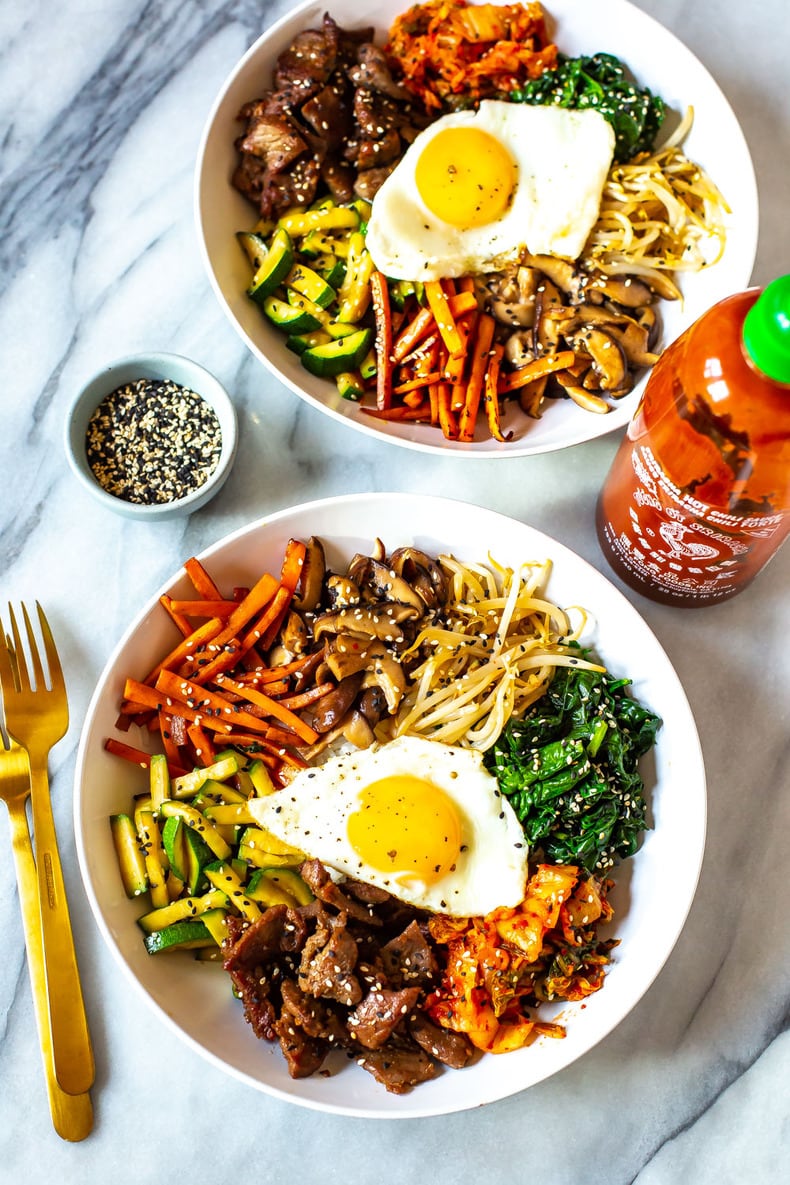
What is bibimbap?
Bibimbap translates to “mixed rice with meat and vegetables“, and one of the best things about this dish is that you can customize it depending on your dietary restrictions or whatever's laying around in the fridge. This stir fry recipe makes the best use of a variety of veggies, and I've tried to make my own using mostly ingredients that you can find at the average North American grocery store.
Got some leftover cabbage? Toss it in. Need to use up some greens? They'll not only taste great, but they'll add some extra nutritional value to your dinner! Feel free to mix it up – you don't really have to use the exact combo of veggies I've used here.
Ingredients in this recipe
Now let's talk a bit more about the individual components of this dish. There are a variety of sesame-soy seasoned veggies along with minced beef in these stir fry bowls.
Here are the ingredients that are typically used in bibimbap when you order it from a restaurant, though it may vary:
- Shittake, oyster or button mushrooms
- Zucchini, cut into matchsticks
- Carrots, cut into matchsticks
- Bean sprouts
- Spinach
- Kimchi
- Minced steak or ground beef
- Egg
- Rice
- Sesame seeds
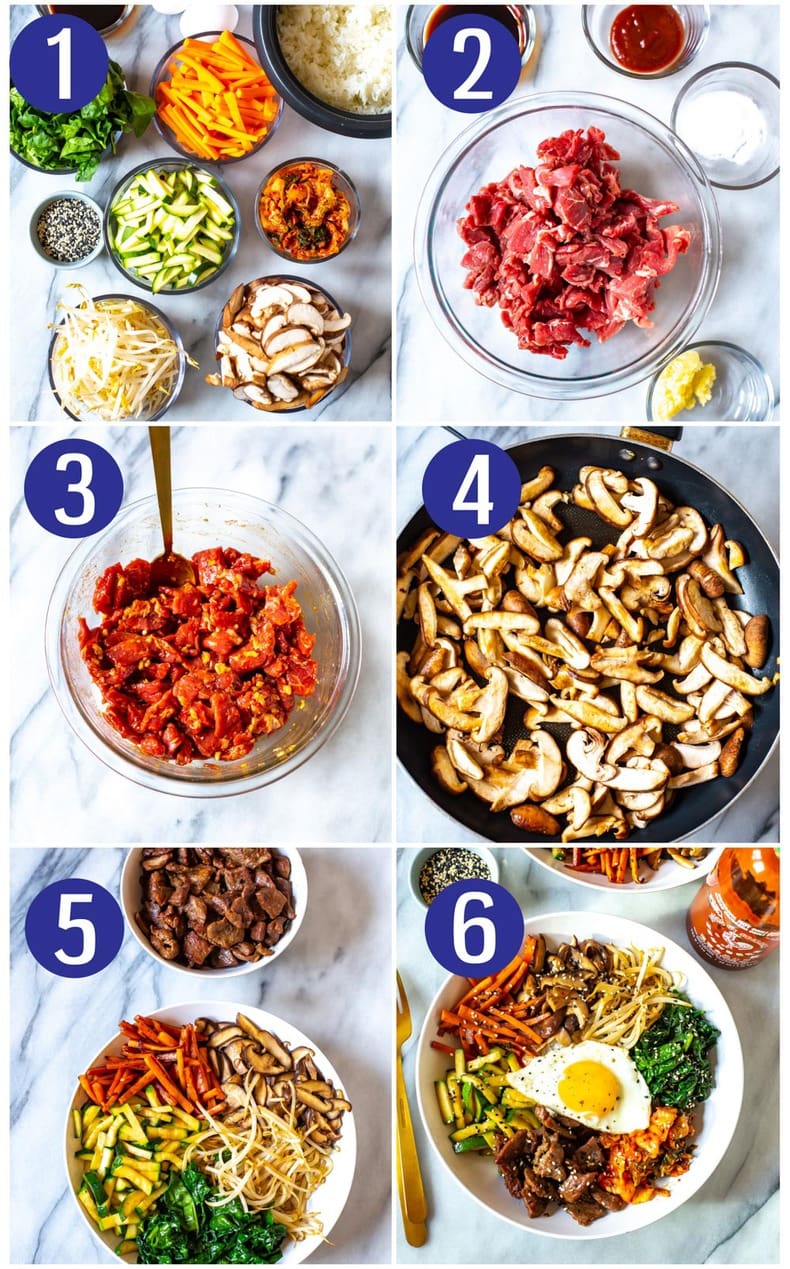
How to make this stir fry (step-by-step)
Here is how to make this bibimbap-inspired bowl:
- Get the rice cooking in a rice cooker while you saute everything.
- Start by sauteing the mushrooms in a pan over high heat. You'll saute each vegetable individually with 1 tsp sesame oil and 1 tsp soy sauce for 1-2 min, then set each cooked veggie aside for presentation. NOTE: you can technically saute the veggies all at once with 2 tbsp of soy sauce and 1 tbsp sesame oil but the presentation won't be the same.
- While veggies are cooking, cut up the steak so that it's very minced and resembles ground beef. You can also just use ground beef too. Toss the meat with 2 tbsp soy sauce and 1-2 tbsp sriracha (or gochujang instead if using), then stir fry over high heat for 2 minutes.
- Wipe the pan with the beef clean, then use a tiny bit of olive oil to fry the egg, removing when the yolk is runny.
- Add 1/2 cup rice to each bowl, then add veggies one at a time, then kimchi and cooked beef. Top with egg, then sprinkle with sesame seeds and serve.
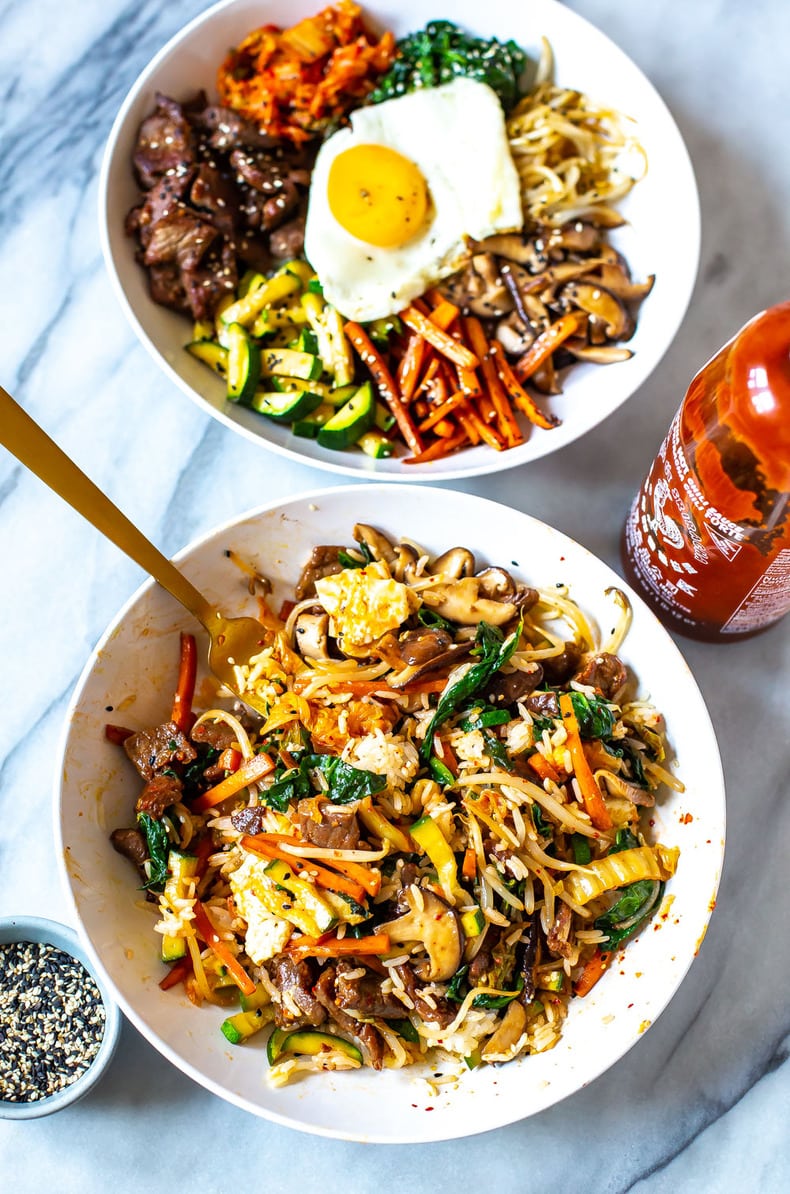
What type of steak should you use?
I just use the cheapest eye of round steaks that I can find and mince them up – you don't need anything fancy as you're only going to be sauteing for a couple of minutes. You can also use fast fry steaks. If you want more tender beef, you could go with a ribeye or top sirloin steak too – it all depends how fancy you're trying to go!
How to make the steak more tender
If you'd like to tenderize the beef even more, you can add 1 tsp of baking soda and 1 tsp of cornstarch to the beef along with the 2 tbsp of soy sauce and sriracha (this method is inspired by one of my fave blogs, RecipeTin Eats). Let it sit in a large bowl or Ziploc bag for 30 minutes before sauteing on high heat.
The baking soda and cornstarch creates an extra layer that will prevent the meat from drying out or overcooking. If you're in a hurry, skip this step but it can result in more tender beef if you're using a cheap cut.
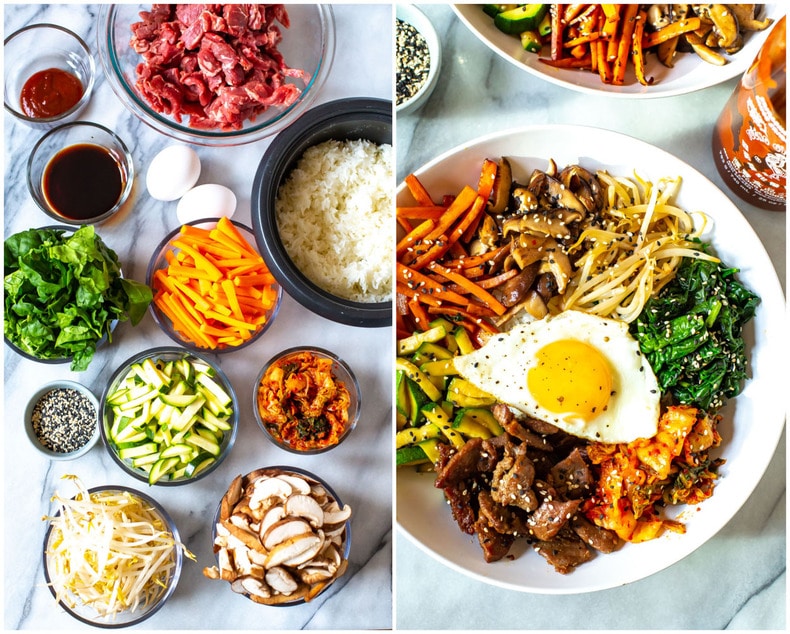
Ingredient substitutions
This is definitely NOT an authentic version of bibimbap as most are served with a raw egg yolk and gochugang (Korean hot pepper paste). In this recipe, I've used sriracha/chili garlic sauce alongside a fried egg with a runny yolk. I have definitely put my own spin on it.
You can also use tamari or coconut aminos as a gluten-free substitute. If you're looking to make this meat-free, you can also easily sub in some sliced chicken breasts or shrimp.
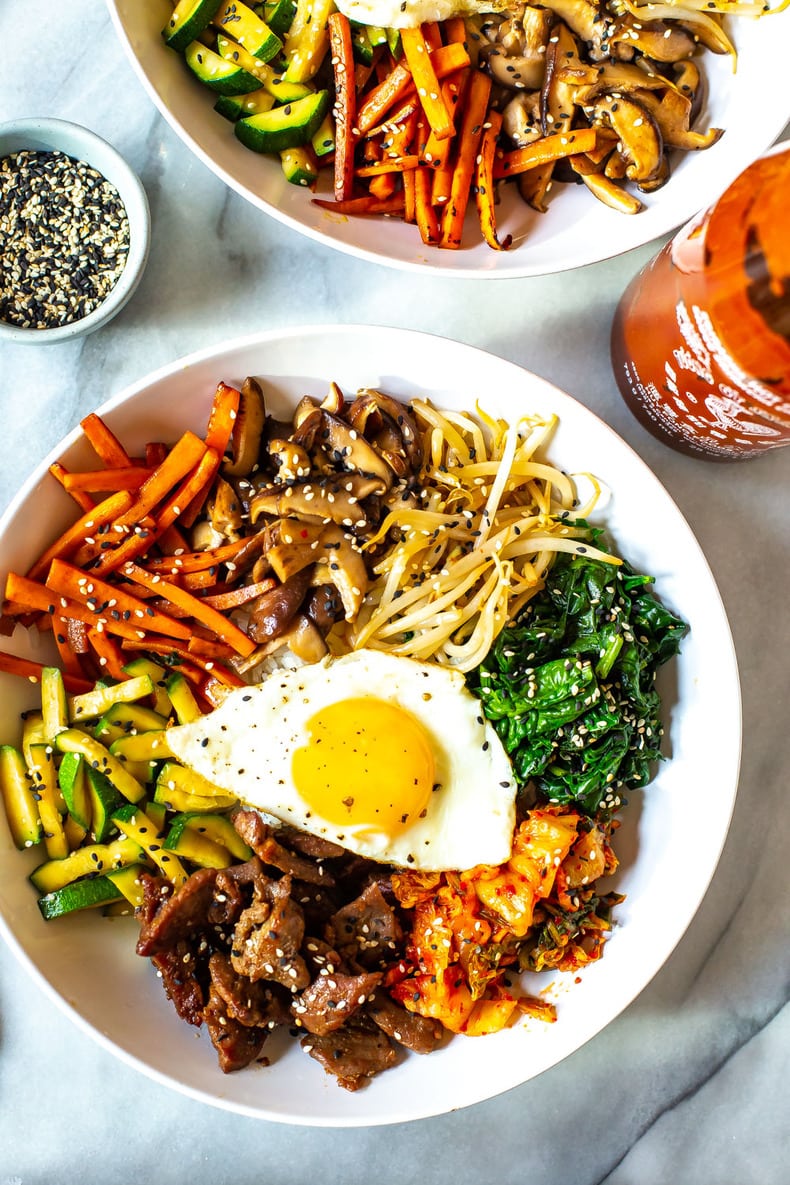
What if you don't have gochujang?
Traditional versions of bibimbap use gochujang, which is a Korean fermented hot pepper paste. You can find some here on Amazon.
If you don't have gochujang to season the beef, you can use sriracha or sambal oelek. Really, any type of chili-based hot sauce will work in a pinch. I don't recommend using regular hot sauce as it will be too vinegary, and technically you don't even need the spiciness so you can just leave it out altogether, although dried chili flakes would also be a great option.
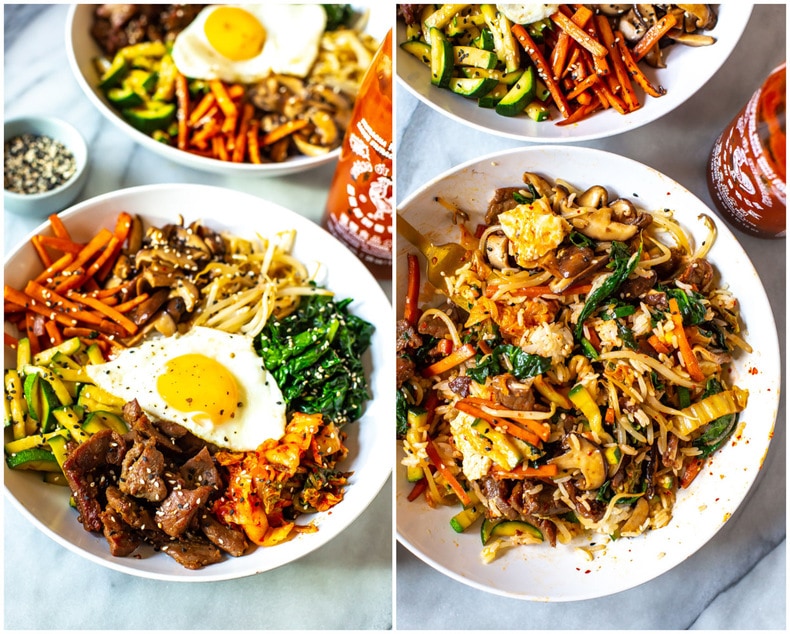
Time-saving tips
To save time, here are some suggestions:
- Cook the veggies altogether as opposed to separate; presentation/taste won't quite be the same, but you'll save a ton of time
- Use pre-cut fast fry steak instead of mincing the beef yourself
- Use a rice cooker to make the rice prep hands-off
- Use pre-chopped veggies from the grocery store to save on prep time
- Add a raw egg instead of the fried egg as the egg will cook in the hot mixture of rice, beef and veggies
Making bibimbap vegetarian
If you want to make this bibimbap vegetarian you can easily do so by leaving out the beef and egg! Just add veggies and rice, then you can add tofu if you want some extra protein, flavouring it with gochujang (or sriracha), soy sauce and sesame oil.
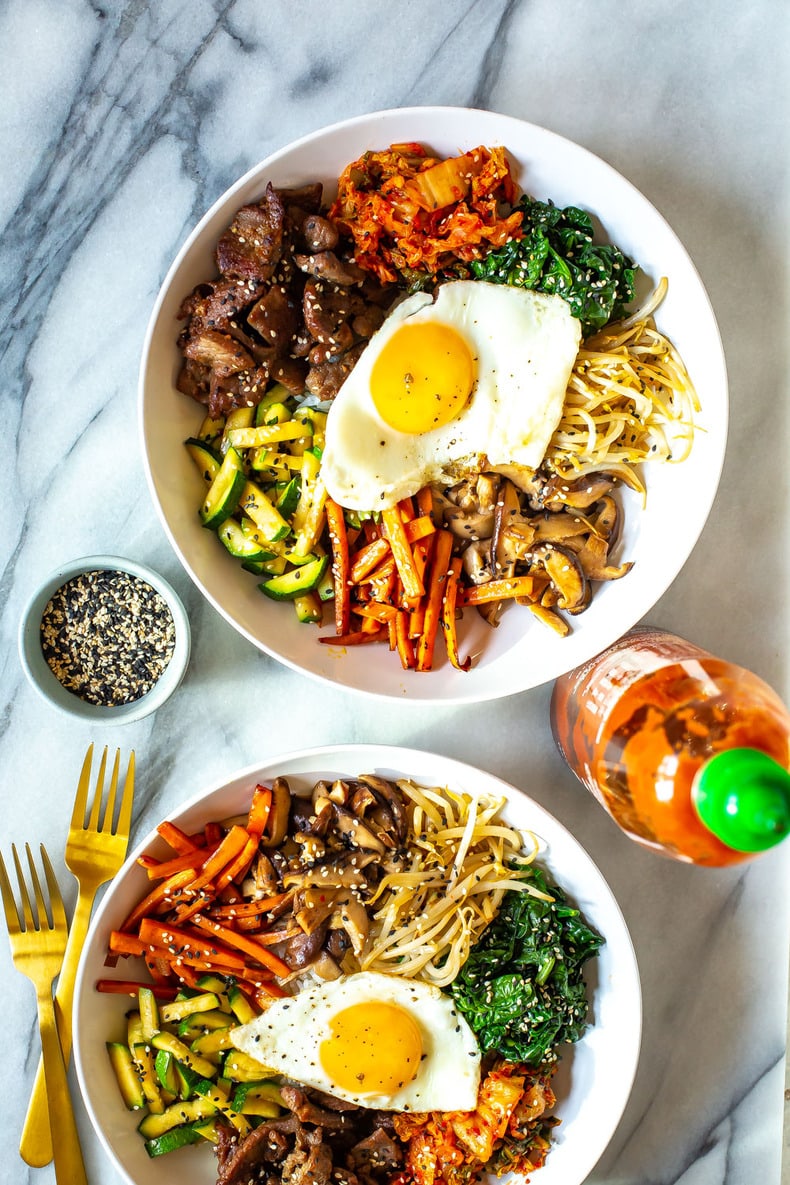
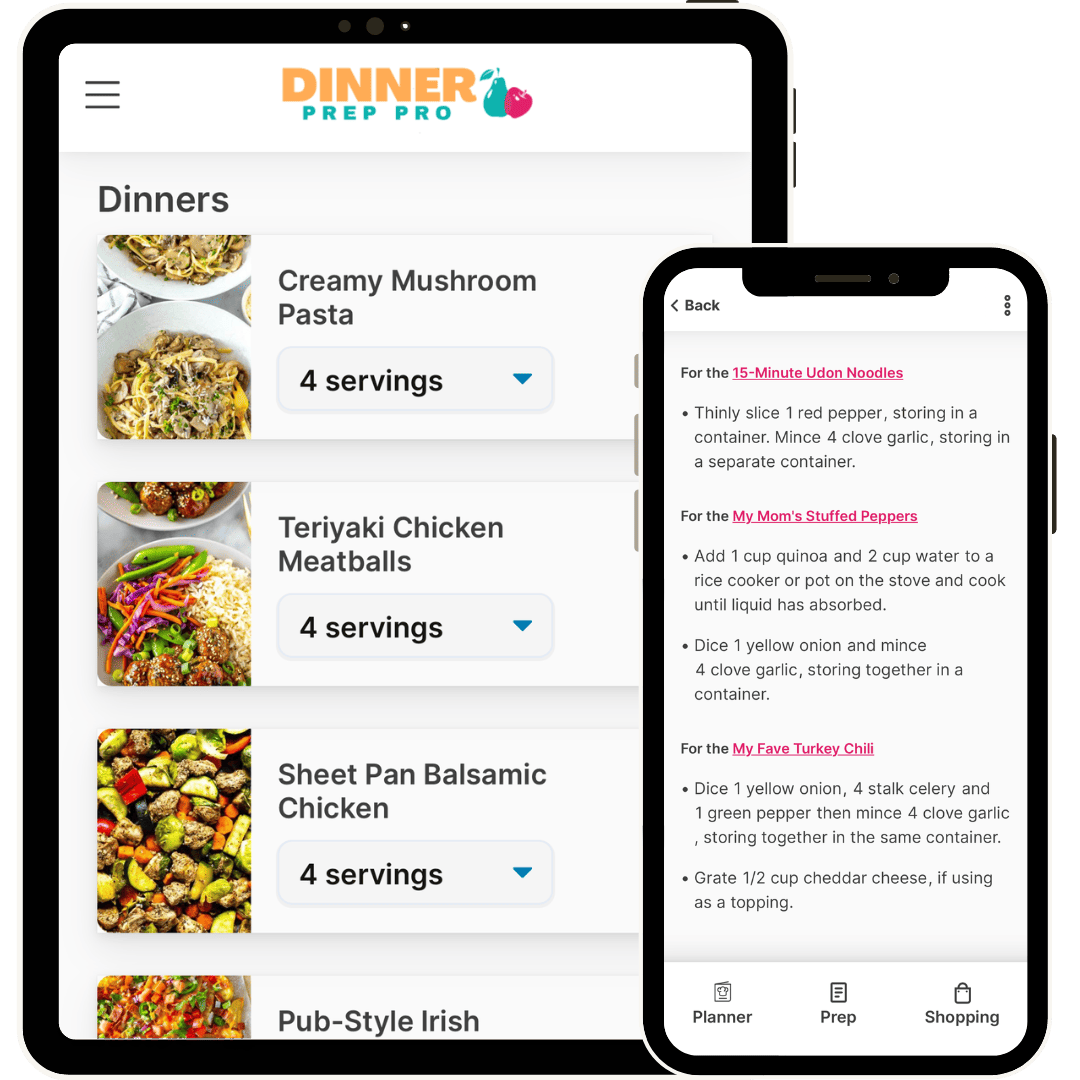
Make healthy eating easy! Join our Dinner Prep Pro app.
- ZERO ADS on over 450 recipes
- Customizable weekly meal plans
- Grocery and meal prep checklists
- Bonus resource library and community
More tasty stir fry recipes
If you're looking for more 30-Minute Stir Fry ideas, I've got you covered! When in doubt, add veggies, protein and an easy soy/chili sauce combo for a quick and easy after-work dinner right?!
Tools to make this recipe
- A rice cooker makes meal prep so much easier! This is the one I use.
- To make this recipe a bit healthier I like to use grass-fed beef from Butcher Box – for a limited time get two free ribeyes and bacon!
- If you're looking for kimchi, this is a good option.
- If you run out of sriracha, buy some here.
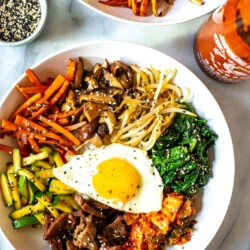
Bibimbap Inspired Beef Stir Fry
Ingredients
- 1 Carrots, cut into matchsticks
- 1 zucchini, cut into matchsticks
- 1 cup Shiitake mushrooms, sliced
- 1 cup bean sprouts
- 2 cups fresh baby spinach
- 1 cup kimchi optional
- 16 oz striploin steaks thinly sliced (or 1lb ground beef)
- 2 tsp baking soda
- 2 cloves garlic, minced
- 3-4 tbsp soy sauce divided
- 1 tbsp Sriracha or gochujang
- 2 tbsp sesame oil divided
- 6 eggs
- Sesame seeds, to serve
Rice
- 2 cups water
- 1 cup white rice
- 1 tsp butter
- 1 pinch salt
Instructions
- Cook rice according to package instructions in a rice cooker.
- Saute mushrooms in pan with 1 tsp sesame oil and 1 tsp soy sauce for 1-2 min on high heat. Continue cooking all veggies this way individually in the same pan, setting aside in a large bowl each time.
- Meanwhile, cut up steak into thin strips and toss with baking soda. You could use ground beef if you're in a pinch, but steak is better. Toss meat with baking soda, garlic, 2 tbsp soy sauce and sriracha (or gochujang instead if using).
- Heat 1 tbsp sesame oil over med-high heat, then cook steak for 2-3 min. Remove from pan.
- Using another tiny bit of sesame oil, heat the same pan on high and add egg. Cook on med-low for 3-4 minutes until egg is semi-cooked.
- Add a bit of rice to each bowl. I use pasta bowls because I love how wide they are and they are great for presentation. Picking out veggies one at a time, place each in circle around bowl, then add kimchi and cooked beef. Top with egg, then sprinkle bowl with sesame seeds and serve.
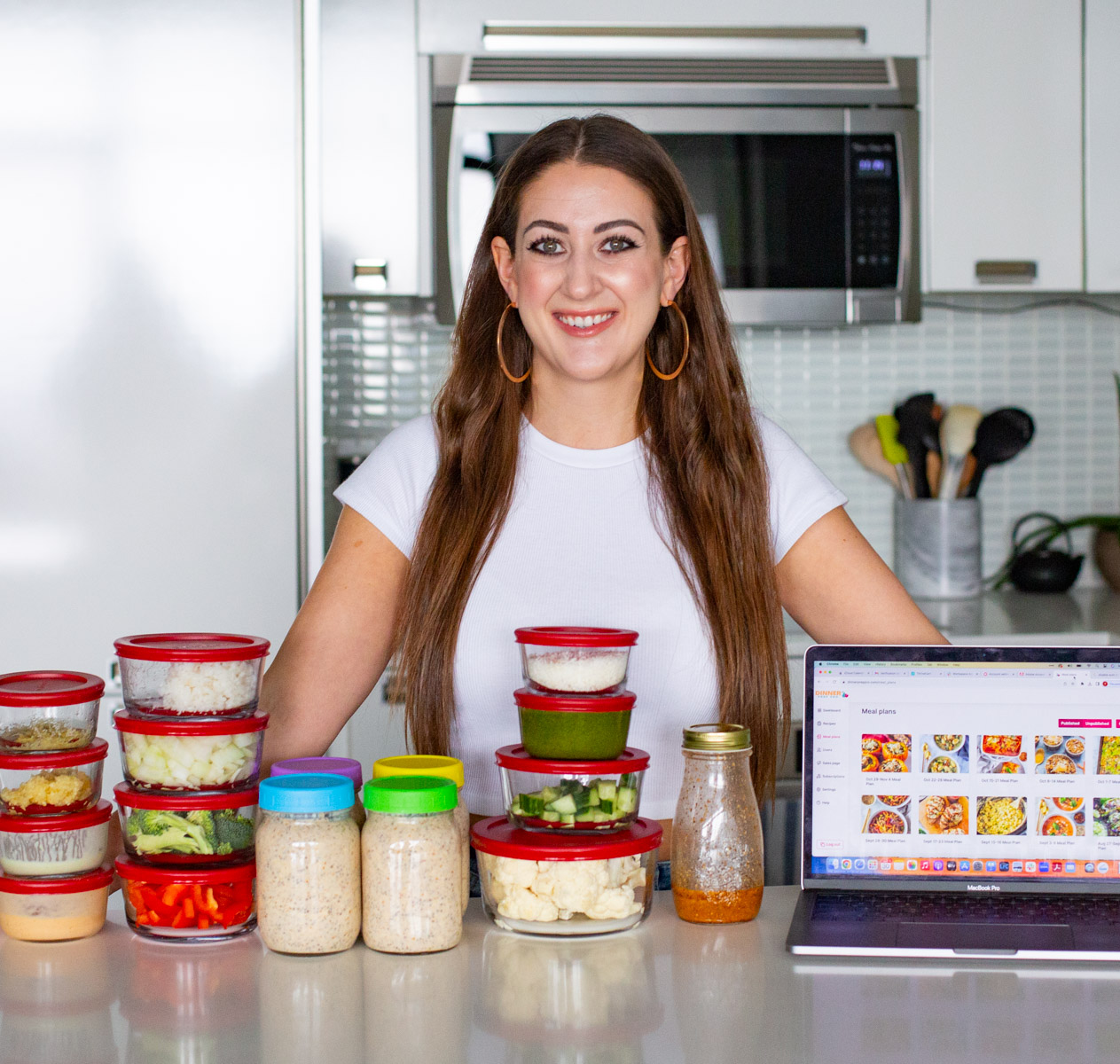
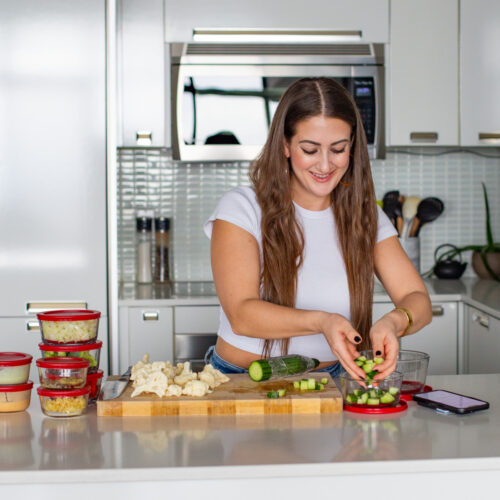
Comments & Reviews
Magan says
This recipe was fun and made a beautiful dish. I would prefer the veggies to have a different flavor to really make them stand out. I will definitely make again but look for some spices to add to the veggies to give the dish a bit of depth. Thanks for the fun recipe!
Kerri says
Um, I vacillate between being open to the whitewashing of the food of my culture with hope that people will be open to trying actual Korean foods if they’re first exposed to North American food that looks like it is may be similar to a traditional Korean dish and being irritated because it will perpetuate the idea that authentic Korean food is weird or inaccessible. Maybe living in California, I have never found it difficult to find any authentic Korean foods in regular grocery stores except maybe the gochujang. Traditional Korean side dishes are made of spinach and mung bean sprouts which are easily found in chain grocery stores. Even in the 1980’s in a small town my mom was able to get the proper items and she didn’t have the luxury of ordering specialty things through the internet.
I will agree that making bibimbop is a great way to utilize food that needs to used but what I really came here to say is that sesame oil should really be used as a finishing oil rather than a cooking oil. I have always used a light cooking oil to actually cook the food and then added the sesame oil at the end for the flavor. It is a very easy and effective way to get a great “asian” flavor and should definitely be used. Just maybe not the way your recipe calls for.
Happy Asian Americans and Pacific Islanders Heritage month!
Taylor Stinson says
Hi Kerri – thank you very much for your thoughtful comment and for sharing that in traditional versions of this dish, sesame oil is used as a finishing oil. I was inspired to try making my own version of bibimbap after trying a version I had in a restaurant here in Toronto. I make many different restaurant copycats and post them to the blog and try my best to be as sensitive as I can when some of those dishes come from different cultural backgrounds but I hear what you’re saying. I have tried to make it clear in the blog post and in the recipe that this is far from an authentic version of the original dish, which I’m sure has many variations, and I have also tried to do some research and cite my sources throughout the blog post as well to try and pay some respect to the dish. But, I understand that as a white creator I need to be open to learning and not causing harm – perhaps with this recipe I struggled with cultural appropriation vs appreciation. I definitely don’t want to discourage people from trying authentic Korean food or make it seem inaccessible or perpetuate otherness by white washing the meal and not listing out the traditional ingredients, among other things. Genuinely, where I live, gochujang and mung bean sprouts are not always widely available at most grocery stores (it’s hit and miss) but there are many local markets that I could be pointing to in the post to try and point people in the right direction and further explore just how amazing Korean cuisine is. I appreciate you sharing how the vegetables are traditionally cooked as I clearly missed the mark on that. I’m open to making any further changes, doing further research, reworking the recipe or any sort of action that is helpful.
Kerri says
Thank you for your thoughtful response. I am not the gatekeeper of how people get to appreciate Korean food and I appreciate how open to adjustments you are. It is certainly not your fault that I grew up having to defend Korean food and constantly explain that we don’t eat dog. It makes seeing the tokenizing of Korean food that much more confusing and uncomfortable for me. That is a me issue and I hope I haven’t turned you off of pursuing expanding your cooking adventures. I wish you the best
Andrea M Raiti says
I made a little variation on the veggies and made chicken instead. It was good. I also made a teriyaki sauce if my boyfriend and his roomates wanted any more sauce. But I enjoyed it with your recipe.
Taylor Stinson says
I’m so happy you enjoyed 🙂
Elaine says
Very tasty and easy to prepare. Takes some to to prep veggies but after that it is a breeze.
Taylor Stinson says
So happy you enjoyed it, Elaine 🙂
Ralph says
“If you’re looking to make this meat-free, you can also easily sub in some sliced chicken breasts or shrimp.”
Um… I don’t think meat-free means what you think it means.
Taylor Stinson says
Hey Ralph – this is a recommendation for making it beef-free (assuming poultry/seafood is not meat). You can use tofu if you’re looking to make it vegetarian.